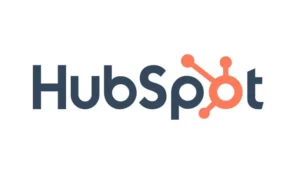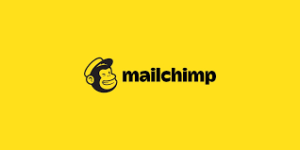Table of Contents
Marketing automation is no longer optional it’s essential. In 2025, businesses are looking for smarter, more scalable solutions to streamline campaigns, manage leads, and convert customers faster. Among the leading platforms are HubSpot, Mailchimp, and ActiveCampaign each offering unique tools for email marketing, customer journeys, and CRM integration.
So, how do you know which platform is best for you?
Let’s dive deep and compare them side by side based on features, ease of use, pricing, and more.
1. Overview at a Glance
Here’s a quick comparison to give you the big picture before we go deeper:
Platform | Best For | Starting Price (Monthly) |
HubSpot | All-in-one CRM & automation | Free (Basic) / $15+ |
Mailchimp | Email marketing & SMBs | Free / $13+ |
ActiveCampaign | Advanced automation & segmentation | $15+ |
2. HubSpot – All-in-One Powerhouse

If you need a complete solution that unifies your marketing, sales, and customer service tools, HubSpot is your go-to.
Key Features:
- Full-featured CRM included
- Visual workflow automation builder
- Landing pages and lead forms
- Smart content personalization
- Marketing attribution and analytics
- Social media scheduling
- SEO and blogging tools
Pros:
- Scalable for growing teams
- Extensive learning resources (HubSpot Academy)
- Great support for inbound marketing
- Advanced reporting dashboards
Cons:
- Can get expensive as you grow
- Slightly overwhelming for beginners
Pricing:
- Free plan includes CRM, email, and forms
- Starter: $15+/month
- Professional: $800/month
- Enterprise: $3,600/month+
Best For:
Businesses that want everything under one roof from lead generation to customer retention especially medium to large teams.
3. Mailchimp – Simple, Smart, and Budget-Friendly

Mailchimp has come a long way from being a simple email tool. Today, it offers basic automation, audience segmentation, and even AI-powered content suggestions.
Key Features:
- Email templates with drag-and-drop editor
- Basic automation (e.g., welcome series, cart abandonment)
- A/B testing and predictive analytics
- Social media posting
- Customer journey builder
- Content optimizer powered by AI
Pros:
- Extremely user-friendly
- Free plan for up to 500 contacts
- Ideal for beginners and small teams
- Quick setup, even for non-tech users
Cons:
- Limited automation features in lower-tier plans
- CRM tools not as powerful as competitors
- Pricing can jump quickly with audience growth
Pricing:
- Free plan (500 contacts, 1,000 monthly emails)
- Essentials: $13/month
- Standard: $20/month
- Premium: $350/month
Best For:
Startups, solopreneurs, and small businesses that prioritize email marketing and want a simple, low-cost way to engage customers.
4. ActiveCampaign – Advanced Automation at Its Best
If email automation is your top priority and you love getting into the weeds with workflows, ActiveCampaign delivers.
Key Features:
- Visual automation builder with if/then logic
- Dynamic content and predictive sending
- Built-in CRM and sales pipelines
- Advanced tagging and segmentation
- SMS and email marketing
- Website visitor tracking
- Lead scoring
Pros:
- Extremely robust automation capabilities
- High email deliverability rates
- Ideal for drip campaigns and multichannel workflows
- Powerful segmentation for hyper-personalization
Cons:
- No free plan
- Can feel complex for beginners
- CRM not as sleek as HubSpot
Pricing:
- Marketing Lite: $29/month
- Plus: $49/month
- Professional: $149/month
- Enterprise: Custom pricing
Best For:
Mid-sized businesses and marketing teams looking for advanced automation, behavior-based targeting, and personalized customer journeys.
5. Integrations and Ecosystem

Let’s look at how well each platform plays with other tools you may already use.
HubSpot:
- 1,500+ integrations via HubSpot App Marketplace
- Connects with Salesforce, Slack, Zoom, Shopify, and more
- Zapier support for custom workflows
Mailchimp:
- 300+ integrations
- Seamless with eCommerce platforms like Shopify, WooCommerce
- Integrates well with Canva, Typeform, and more
ActiveCampaign:
- 900+ integrations
- Deep integrations with CRMs, payment processors, and webinar tools
- Built-in Shopify and WordPress plugins
Verdict:
HubSpot leads in enterprise-level integrations, ActiveCampaign offers deeper automation-based integrations, and Mailchimp keeps it simple but functional.
6. User Experience and Ease of Use

HubSpot:
- Modern UI with dashboard customization
- Might require training for complex workflows
- Extensive knowledge base and tutorials
Mailchimp:
- Clean interface and drag-and-drop features
- Beginner-friendly
- Helpful tips and wizards throughout the platform
ActiveCampaign:
- Visual workflow builder is powerful but needs a learning curve
- Best suited for marketers who are comfortable with logic-based flows
Verdict:
For ease of use, Mailchimp wins for beginners. HubSpot offers the most polished experience overall, while ActiveCampaign caters to advanced users.
7. Reporting and Analytics

HubSpot:
- Deep analytics for marketing, sales, and service
- Custom dashboards and reports
- Attribution tracking
Mailchimp:
- Basic reports on open rates, CTR, bounce rates
- Predictive insights available in paid plans
ActiveCampaign:
- Detailed automation performance reports
- Engagement tracking across channels
- Goal setting and split testing
Verdict:
HubSpot leads in comprehensive reporting, while ActiveCampaign gives granular control. Mailchimp covers the basics for most small businesses.
8. Which Platform Is Right for You in 2025?
Here’s a simple breakdown:
- Choose HubSpot if you want an all-in-one suite that scales with your business and offers both marketing and sales tools.
- Choose Mailchimp if you’re just starting out or need something simple for email marketing.
- Choose ActiveCampaign if your focus is advanced automation and segmentation with high deliverability.
Final Thoughts
Choosing the right marketing automation platform depends on your goals, team size, budget, and growth plans.
HubSpot offers robust enterprise-level tools with CRM integration.
Mailchimp is ideal for entry-level automation and email campaigns.
ActiveCampaign is the powerhouse for complex, targeted workflows.
Each platform has strengths, so evaluate based on the features your business will actually use not just what sounds impressive.
Still unsure? Most of these tools offer free trials so don’t hesitate to test and compare in real time.
